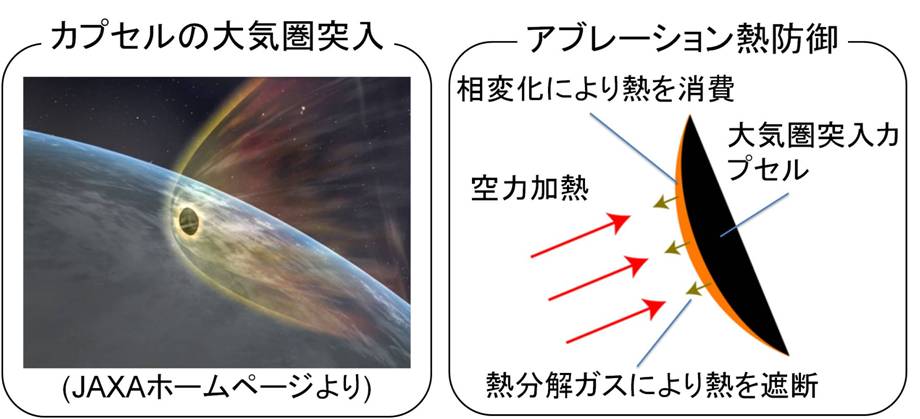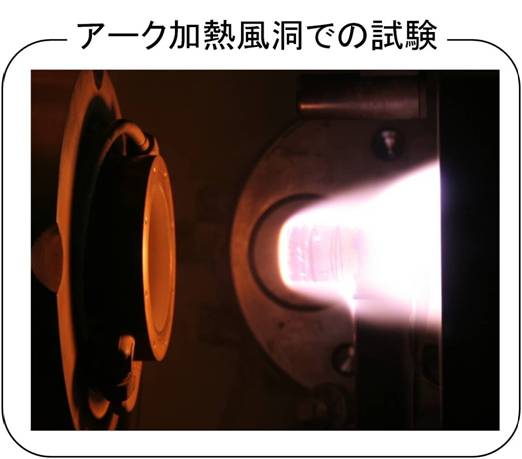Atmoshperic Entry
About
During re-entry, the ablator which protects spacecraft from aerodynamics recedes by heat. Although, it is necessary to estimate appropriate thickness of ablator in advance, an actual heat condition in pre-flight experiment cannot be accurately estimated with current technology. This brings a problem that ablator has been increasing its weights, due to the overestimated thickness. In order to improve this problem, our lab researches to find useful methods for measuring its recession in the actual flights and to reduce ablator weights to lower the cost of flights.
Thermal protection by ablator

Entry and thermal protection
During entry, a spacecraft is extremely heated as it enters with super- or hyper-sonic speeds. The asteroid probe called “Hayabusa” returned to the earth at a speed of 13km/s with a high surface temperature (3000degree Celsius).In order to protect a spacecraft from this harsh environment, the thermal protection material made of carbon fibers impregnated with a resin is used.
Future Works

Experiment at Arc-heated wind tunnels
High temperature leads to a phase transformation such as thermo-decomposition of resin and sublimation of carbon fiber in the ablator. Afterward, a part of the internal resin becomes gaseous and it moves away through pores into surroundings. Finally, it protects itself from heating. In this way, this phenomenon prevents high temperatures from melting spacecrafts. Therefore, an appropriate thickness of the ablator must be estimated before flights.
For the future missions planned in Japan, a lighter ablator will be needed. In order to evaluate the thermal protection of a new ablator, the Arc-heated wind tunnel should be used. This can create re-entry heat condition from space to earth’s atmosphere. In addition, this can evaluate records of thermal between internal/external surfaces and a level of ablator’s recession. We built computational model which can measure an appropriate level of ablators’ thickness in advance.




